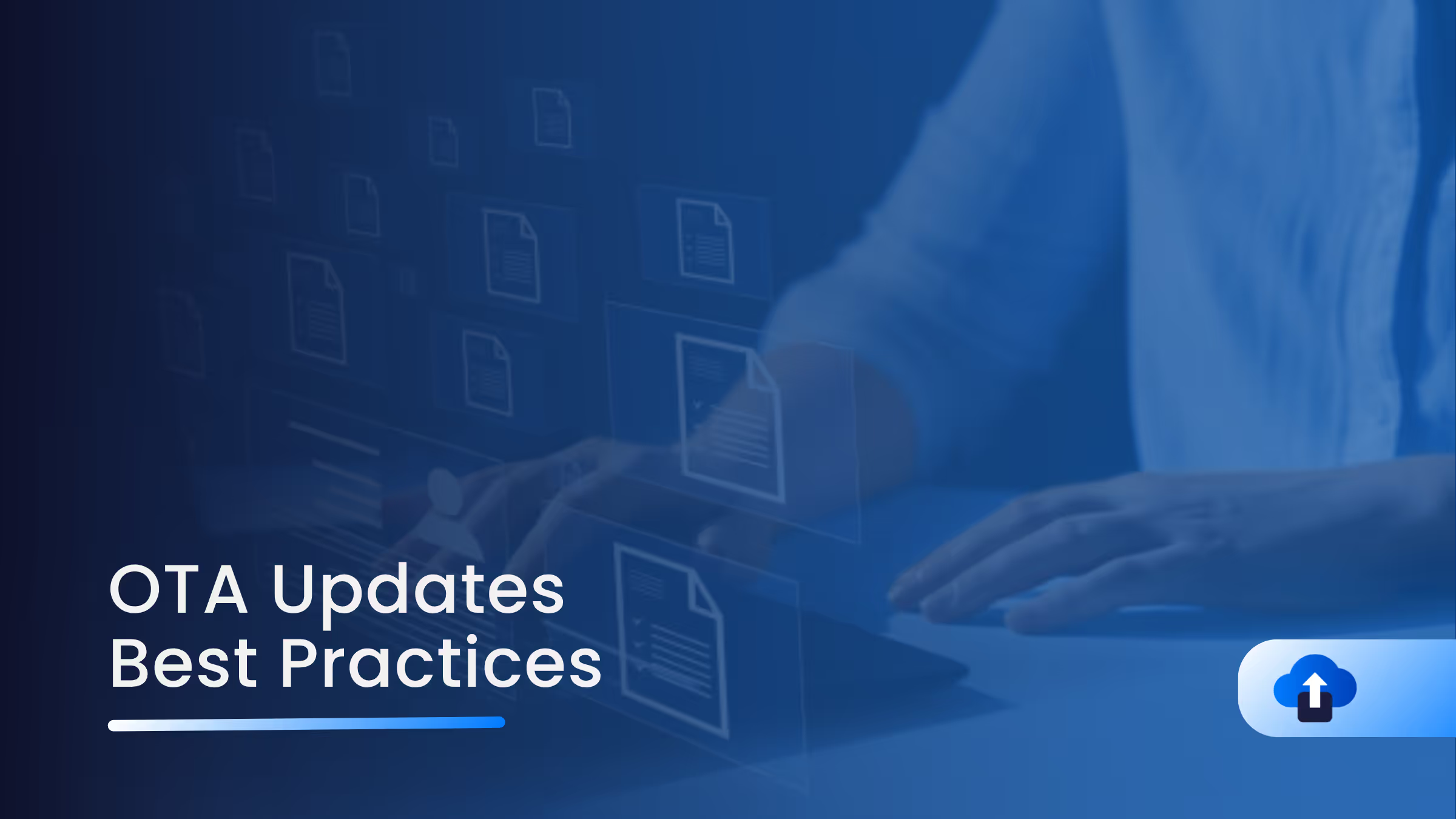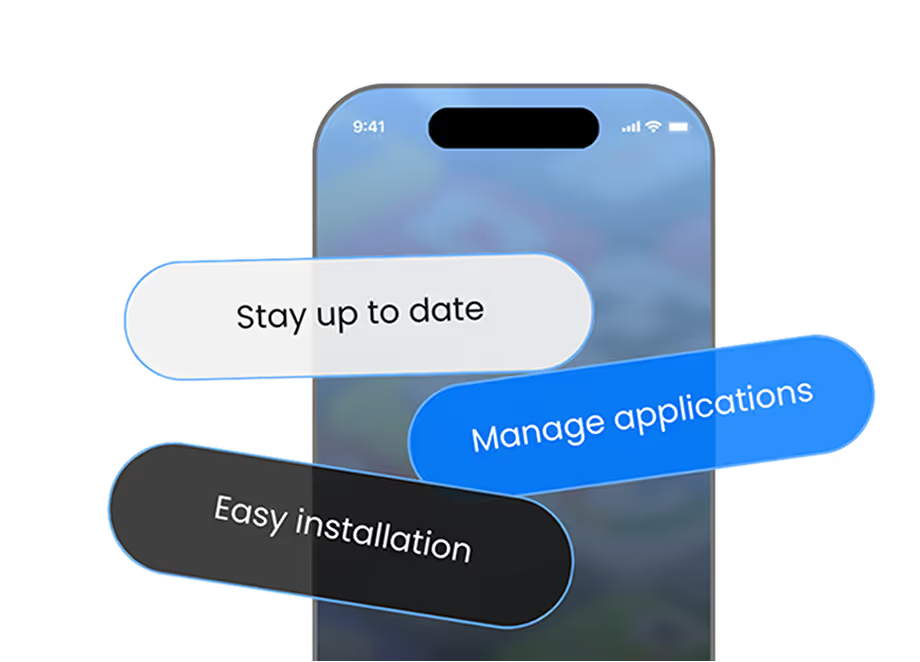
In 2025, the pace of mobile app development will never be faster, and user expectations will never be higher.
Gone are the days when apps could afford to wait for App Store approvals just to fix a typo or roll out a small UI improvement.
Today, Over-the-Air (OTA) updates empower teams to push live updates instantly, often without resubmitting to the app store.
But with great power comes great responsibility. To avoid performance issues, compliance violations, or bad user experiences, developers must follow a set of best practices for OTA updates.
Here’s a comprehensive guide to doing OTA right in 2025, and why forward-looking teams are choosing modern alternatives like AppsOnAir to streamline their update workflows.
Why OTA Updates Matter More Than Ever
OTA updates allow developers to:
- Fix bugs in real time without waiting on app store reviews
- Experiment faster with A/B testing or phased rollouts
- Improve app reliability without pushing a full binary update
- Control feature flags and UI flows dynamically
This flexibility helps reduce downtime, shorten feedback loops, and enhance the user experience.
Technical Best Practices
1. Version Control & Rollbacks
Always attach a clear version number to every update. Build in rollback capabilities to revert buggy or incompatible updates automatically if needed. The key is to fail safely and ensure your app can recover gracefully.
2. Use Differential Updates
Rather than pushing the entire app bundle, deliver only the changes (deltas). This minimizes the payload size and improves speed. Differential updates are especially important for users on limited data plans or slower networks.
3. Security & Integrity
Security should never be an afterthought:
- Sign your update bundles
- Encrypt the update payload
- Validate checksum/hash on the client side before applying updates
These steps protect against tampering and man-in-the-middle attacks.
4. Compatibility Checks
Ensure that your update targets only compatible devices and OS versions. Incompatible OTA updates can crash apps or lead to poor UX. Always check:
- Native module version compatibility
- OS-level capabilities (iOS vs Android)
- API deprecations
User Experience Best Practices
1. Make Updates Seamless
Users shouldn’t feel interrupted by an update. Ideally, OTA updates should apply silently when the app is idle or in the background. For significant UI changes or behavior shifts, notify the user respectfully.
2. Optimize for Low Data Consumption
Minimize your update bundle size and avoid unnecessary dependencies. Users may delete your app if it starts consuming too much background data.
3. Offline-First Support
Always build fallbacks if the update fails or if the user is offline. Don’t let your app crash or freeze because it can't fetch the latest OTA patch.
App Store Compliance in 2025
App stores have evolved, and their policies on OTA updates have grown more nuanced. Some updates can be silently patched via OTA, while others, like changing core app behavior or adding major features, still require full app store review.
Key considerations:
- Apple’s guidelines require that apps do not fundamentally change behavior without review.
- Google Play now requires clear version tracking for dynamically updated content.
- DMA and GDPR mandate transparency in update delivery and user consent in certain regions.
Best Practice: Document and log every OTA update deployed, and notify users when changes affect data, permissions, or UX.
Monitoring and Rollout Observability
To deploy confidently, you need full visibility into your update pipeline:
- Track update success and failure rates
- Monitor crash logs post-deployment
- Log performance regressions tied to specific OTA versions
- Use feature flags to enable gradual rollout and rollback by percentage or user cohort
Choosing the Right OTA Platform in 2025
The right OTA platform depends on your stack, scale, and team workflow.
Popular Options:
- Microsoft CodePush (now legacy): Was widely adopted for React Native, but has limitations in flexibility and customization.
- Expo Updates: Great for fully Expo-managed apps but restrictive for bare workflows or custom native modules.
- Custom CDNs: High control, but high overhead in security, versioning, and analytics.
Why AppsOnAir is the Modern CodePush Alternative
In 2025, many teams are transitioning away from outdated or restrictive OTA tools in favor of AppsOnAir, a lightweight and developer-friendly OTA delivery platform.
Built with Developer Experience in Mind
AppsOnAir simplifies the entire OTA lifecycle:
- No complex setup or CI/CD dependencies
- Quick integration with React Native, custom JS frameworks, or native code
Fast, Secure Bundle Delivery
Updates are signed, encrypted, and verified by default; no manual setup needed.
Full Rollback & Version Control
Marketing campPush updates with confidence and revert instantly if anything goes wrong. AppsOnAir keeps a full changelog and rollback history for every release.aigns benefit from deep linking by delivering personalized and direct experiences.
Real-Time Monitoring & Analytics
Get real-time insight into update success rates, active app versions, and user engagement after deployment.
Flexible, Transparent Pricing
Whether you're a solo indie developer or an enterprise team, AppsOnAir offers predictable pricing without usage spikes or hidden fees.
Platform Agnostic & Future-Proof
AppsOnAir works with:
- React Native (both bare and managed workflows)
- Capacitor and Ionic apps
- Native Android/iOS apps using JavaScript engines
- Progressive Web Apps with service worker patching
Common Pitfalls to Avoid
- Breaking compatibility between OTA JS and native code
- Pushing critical updates silently without informing the user
- Overusing OTA to bypass app store policies
- Failing to monitor app behavior after deployment
Always treat OTA as a complement to, not a replacement for, traditional update processes.
Future Trends in OTA Updates
- AI-driven update rollouts that predict failure rates and adapt rollout speed dynamically
- Server-driven UIs (SDUI), where layout and logic are updated over the air
- Modular app architecture where individual features or screens are hot-swapped
Always treat OTA as a complement to, not a replacement for, traditional update processes.
Conclusion
Over-the-Air updates are no longer optional; they're a must-have for fast-moving mobile teams. But success depends on following smart, secure, and user-centered practices.
Whether you're managing a small React Native app or a large-scale production build, the right OTA strategy can save you time, improve user satisfaction, and protect your brand.
And if you're looking for a modern, CodePush alternative that lets you push live app updates, explore AppsOnAir CodePush Today.












